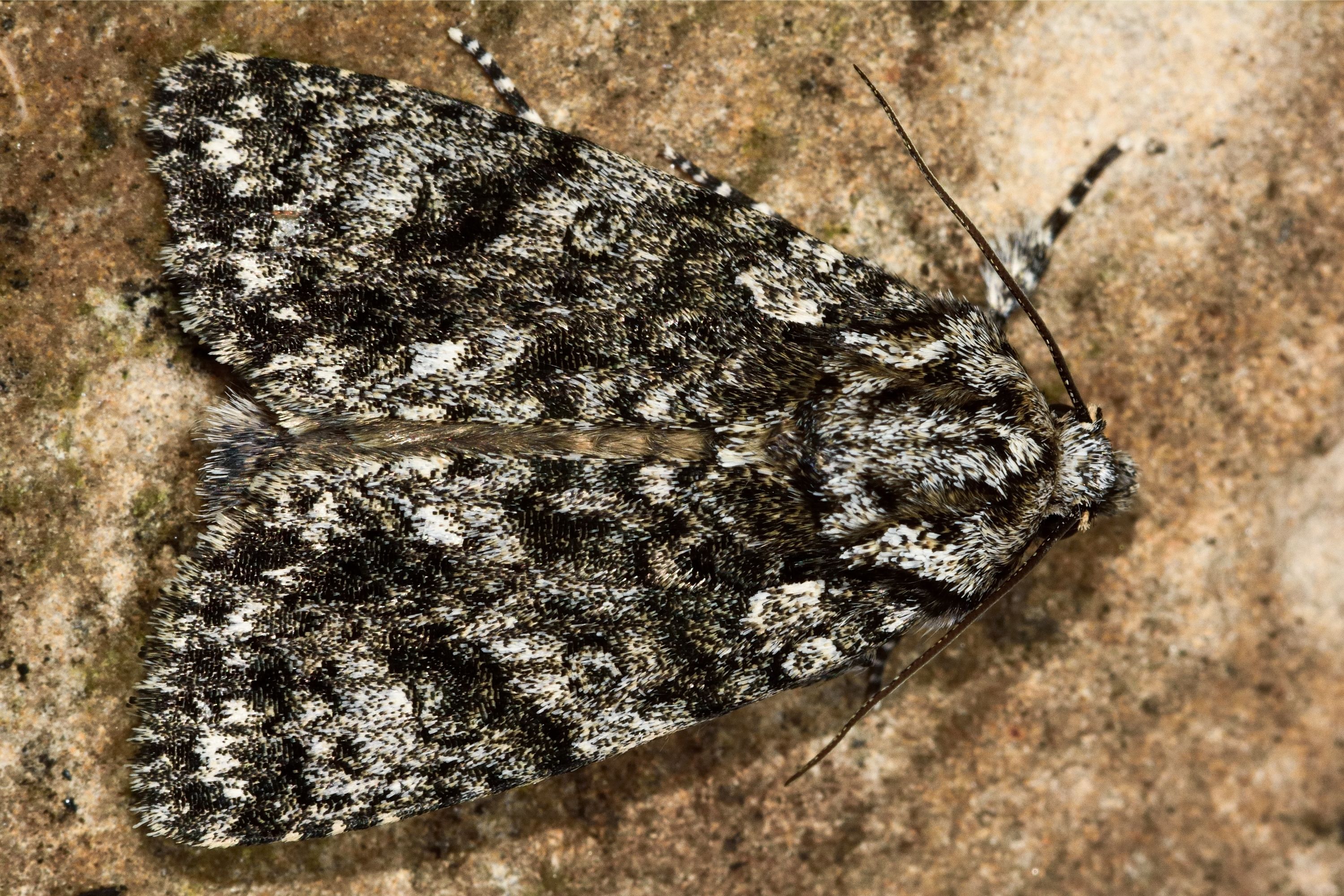Poplar grey
(Acronicta megacephala)

Description
The poplar grey (Acronicta megacephala) is a moth of the family Noctuidae. It is found throughout Europe. A. megacephala F. (3b). Forewing pale grey, suffused with dark, except in a patch beyond cell hindwing white in male, greyer in female. Larva dark grey, with granulated yellowish dots ; segment 11 with a large yellowish-white dorsal patch ; the hairs, which rise singly, whitish : head black with pale — In grumi Alph. the forewing is narrower, the space between inner line and median shade conspicuously whitish; this form is found in West China. — ab. ochrea Tutt has the ground colour distinctly ochreous; while in ab. rosea Tutt the forewing is rosy-tinged. For a key to the terms used, see Glossary of entomology terms. Melanic forms sometimes occur. The wingspan is 40–45 mm. This moth flies at night from May to August and is attracted to light and sugar. The hairy larva is grey with black and red markings and a white patch towards the rear. It feeds on poplars and willows and sometimes on grey alder. The species overwinters as a pupa. Acronicta is a genus of noctuid moths containing about 150 species distributed mainly in the temperate Holarctic, with some in adjacent subtropical regions. The genus was erected by Carl Linnaeus in his 1758 10th edition of Systema Naturae. Caterpillars of most Acronicta species are unmistakable, with brightly colored hairy spikes, and often feed quite visibly on common foliate trees. The hairy spikes may contain poison, which cause itchy, painful, swollen rash in humans on contact. The larva of the smeared dagger moth (A. oblinita) is unusually hairy even for this genus. Acronicta species are generally known as dagger moths, as most have one or more black dagger-shaped markings on their forewing uppersides. But some species have a conspicuous dark ring marking instead. Its eyes are naked and without eyelashes. The proboscis is fully developed. Antennae are simple in both sexes. Thorax and abdomen tuftless. Abdomen with long coarse hair on the dorsal part of proximal segments. Legs spineless. Forewings with non-crenulate cilia. Inner margin slightly lobed towards base.
Taxonomic tree:







